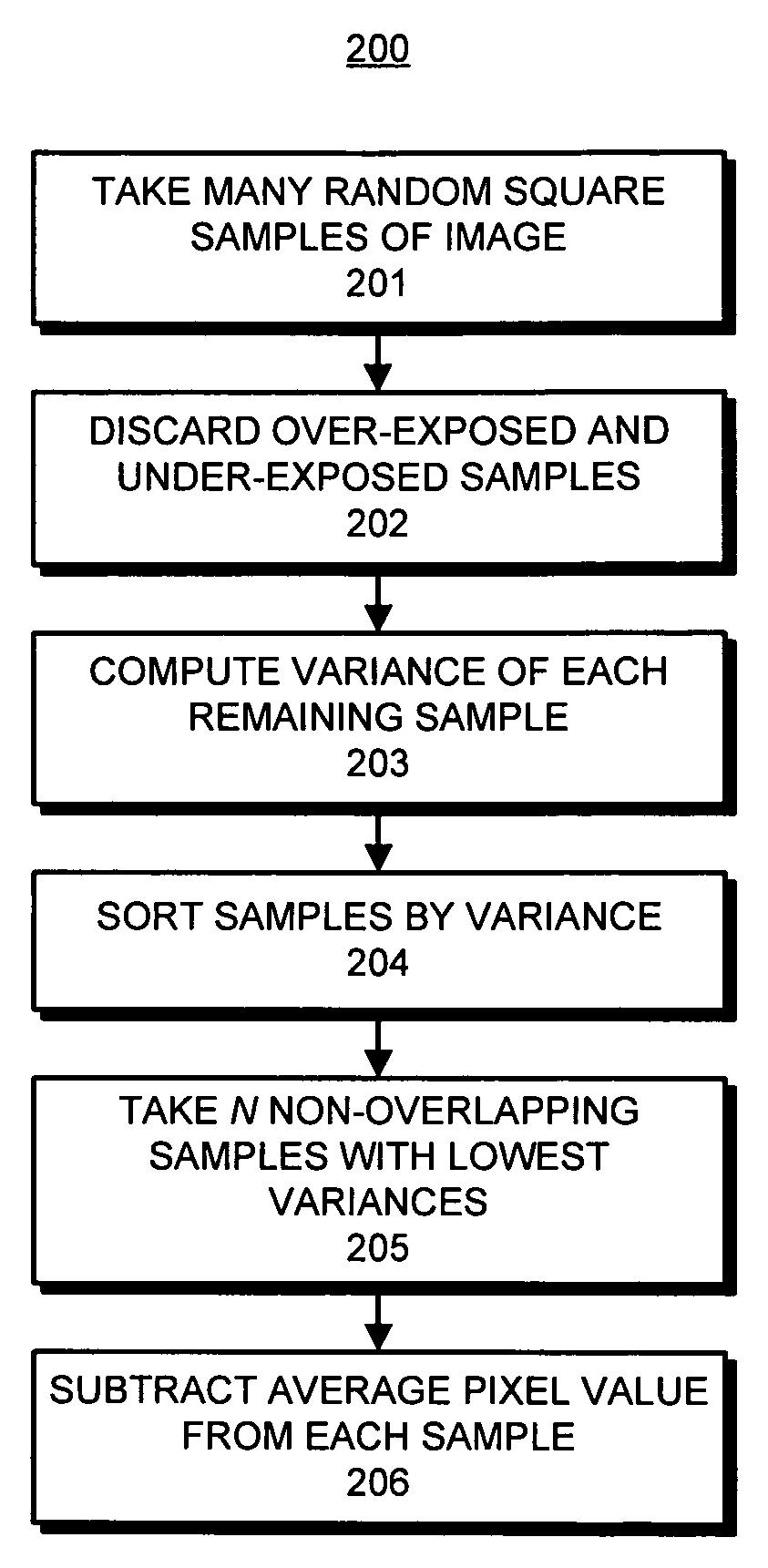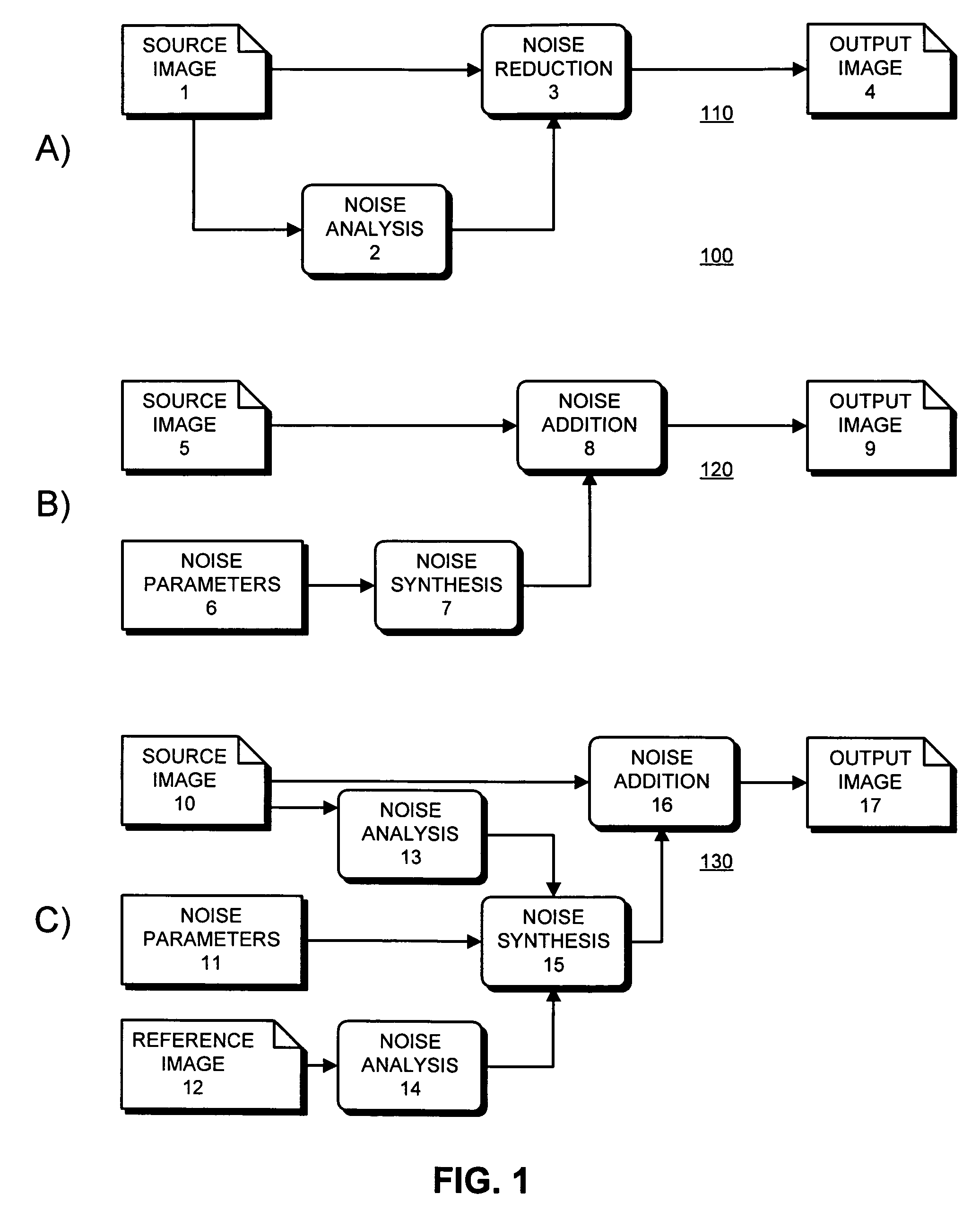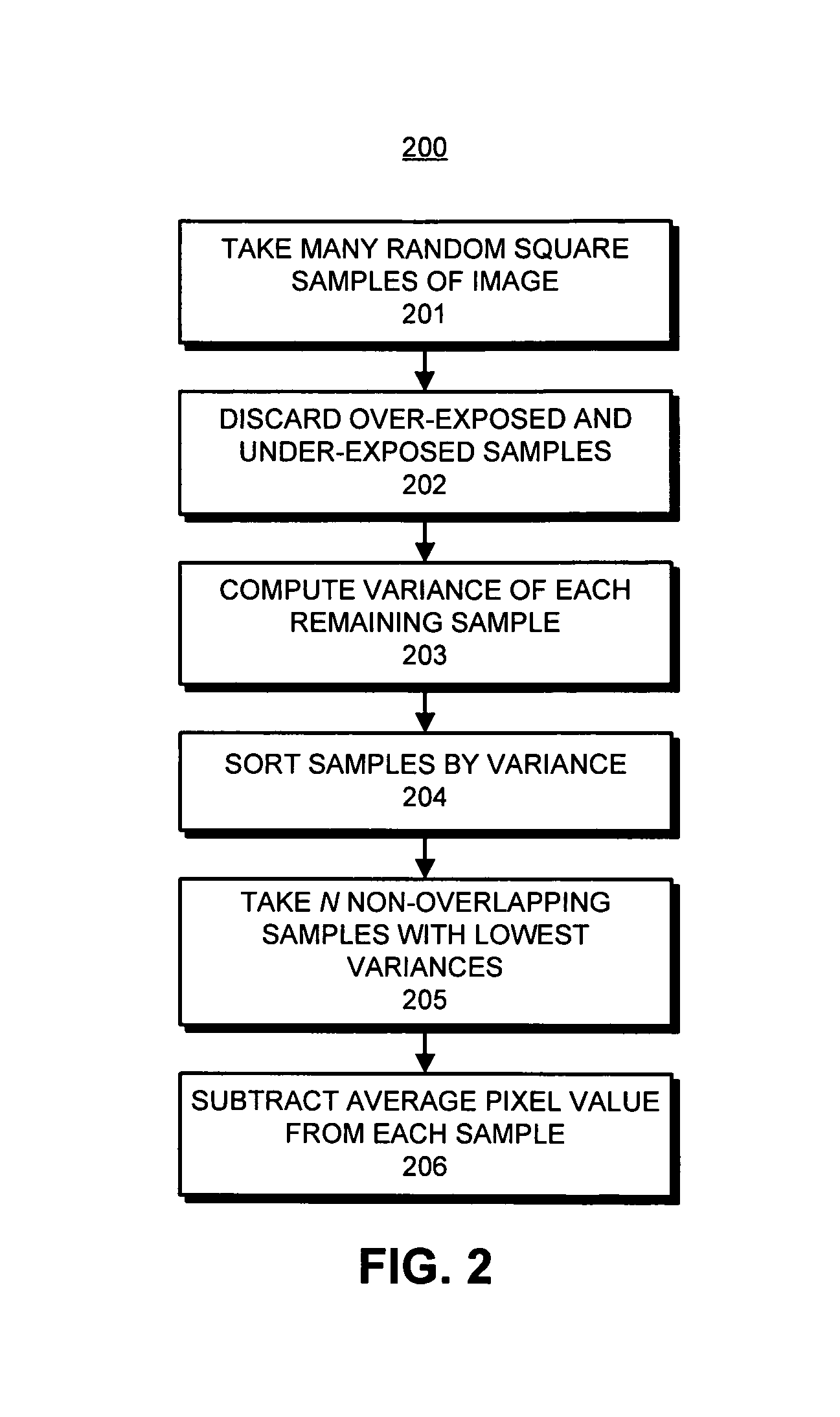System for manipulating noise in digital images
a digital image and noise technology, applied in image data processing, image enhancement, instruments, etc., can solve the problems of large-band noise, inclusion of such noise, and often unwanted excessive noise, and achieve the effect of preserving fine image detail and overall sharpness
- Summary
- Abstract
- Description
- Claims
- Application Information
AI Technical Summary
Benefits of technology
Problems solved by technology
Method used
Image
Examples
Embodiment Construction
[0026]Referring to FIGS. 1(a), (b) & (c), there is shown three fundamentally different uses for the present invention.
[0027]FIG. 1a shows a noise reduction system 110 according to a one embodiment of the present invention. In this embodiment a source image 1 is fed into a noise analysis stage 2. The results of this analysis are used by a noise reduction stage 3 to produce an output image 4 with significantly less noise than the source image.
[0028]FIG. 1b shows a noise addition system 120 according to a her embodiment of the invention. Again there is a source image 5 and a set of user-specified noise parameters 6 which control the quantity and quality of the noise created in a noise synthesis stage 7. The resulting noise is then combined with the source image in a noise addition stage 8, resulting in an output image 9 which displays noise of the specified type.
[0029]FIG. 1c shows a noise matching system 130 according to still further embodiment of the present invention. In this embod...
PUM
 Login to View More
Login to View More Abstract
Description
Claims
Application Information
 Login to View More
Login to View More - R&D
- Intellectual Property
- Life Sciences
- Materials
- Tech Scout
- Unparalleled Data Quality
- Higher Quality Content
- 60% Fewer Hallucinations
Browse by: Latest US Patents, China's latest patents, Technical Efficacy Thesaurus, Application Domain, Technology Topic, Popular Technical Reports.
© 2025 PatSnap. All rights reserved.Legal|Privacy policy|Modern Slavery Act Transparency Statement|Sitemap|About US| Contact US: help@patsnap.com



